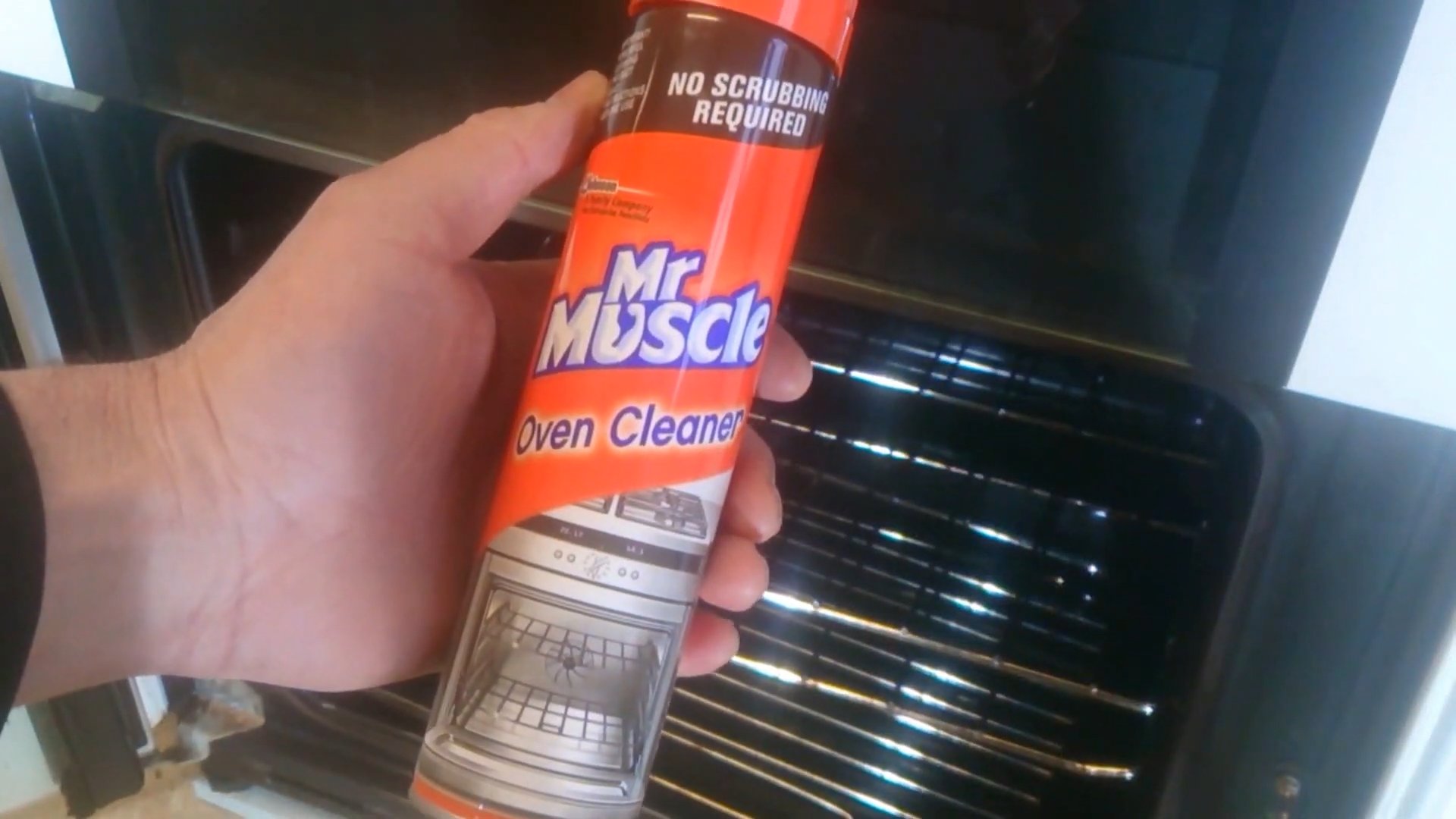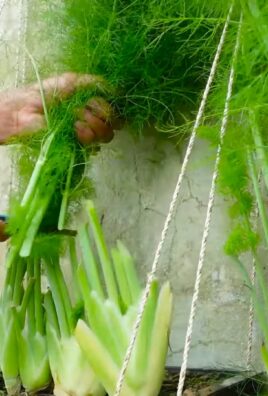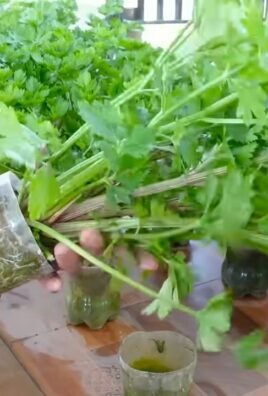DIY Oven Cleaner: Are you tired of spending hours scrubbing your oven, only to be met with stubborn grease and grime? I know I am! Let’s face it, cleaning the oven is one of those chores we all dread. But what if I told you there’s a simple, effective, and budget-friendly way to get your oven sparkling clean using ingredients you probably already have in your pantry?
For generations, resourceful homemakers have relied on homemade cleaning solutions, often passed down through families. Before the advent of harsh chemical cleaners, natural ingredients like baking soda and vinegar were the go-to for tackling tough messes. This tradition of DIY cleaning not only saves money but also reduces our exposure to potentially harmful chemicals, creating a healthier home environment.
That’s why I’m so excited to share this amazing DIY oven cleaner recipe with you. It’s a game-changer! This isn’t just about saving a few bucks; it’s about creating a safer, healthier, and more sustainable cleaning routine. Plus, there’s something incredibly satisfying about knowing you’ve conquered a tough cleaning task with simple, natural ingredients. So, ditch the harsh chemicals and let’s get started on making your oven shine with this easy and effective DIY solution!

DIY Oven Cleaner: A Sparkling Oven Without the Harsh Chemicals
Okay, let’s face it, cleaning the oven is probably on everyone’s list of least favorite chores. The store-bought cleaners are often harsh, filled with chemicals, and leave a lingering smell that makes you question if you should even bake anything afterward. But fear not! I’m going to show you how to make a powerful, effective oven cleaner using ingredients you probably already have in your pantry. This method is not only safer for you and your family, but it’s also incredibly budget-friendly.
What You’ll Need
Before we dive in, let’s gather our supplies. This is a pretty simple recipe, so you won’t need much:
* Baking Soda: This is our main cleaning agent. It’s mildly abrasive and helps to loosen grime.
* Water: To create a paste and activate the baking soda.
* White Vinegar: This reacts with the baking soda to create a fizzing action that helps to lift stubborn stains.
* Spray Bottle: For applying the vinegar.
* Spatula or Scraper: To help remove the loosened grime. I prefer a plastic one to avoid scratching the oven surface.
* Gloves: To protect your hands. Even though this is a natural cleaner, it’s always a good idea to wear gloves.
* Sponge or Cloth: For wiping down the oven.
* Old Towels or Newspaper: To protect your kitchen floor.
* Small Bowl: For mixing the baking soda paste.
Step-by-Step Instructions: The Baking Soda Paste
This is the foundation of our oven cleaning magic. We’re going to create a thick paste that will cling to the oven walls and break down the baked-on gunk.
1. Empty the Oven: First things first, remove everything from your oven – racks, baking stones, thermometers, anything that’s in there. We want a clean slate to work with.
2. Mix the Paste: In your small bowl, combine about ½ cup of baking soda with enough water to form a thick, spreadable paste. You’ll probably need to add the water a little at a time, mixing as you go, until you get the right consistency. It should be thick enough to stick to the oven walls without running. I usually start with a few tablespoons of water and add more as needed.
3. Coat the Oven: Now, using your gloves, generously coat the entire interior of your oven with the baking soda paste. This includes the walls, the floor, the door, and even the inside of the glass (if your oven door has a window). Be sure to avoid the heating elements. I find it easiest to apply the paste with my hands, but you can also use a spatula or a brush if you prefer.
4. Let it Sit: This is the most important part! Let the baking soda paste sit in your oven for at least 12 hours, or even better, overnight. The longer it sits, the more time it has to work its magic and loosen the grime. I usually do this before I go to bed so it can work while I sleep.
Step-by-Step Instructions: The Vinegar Activation and Cleaning
After the baking soda paste has had its time to work, it’s time to unleash the power of vinegar! This is where the fun, fizzy action happens.
1. Prepare the Vinegar: Fill your spray bottle with white vinegar. You don’t need to dilute it.
2. Spray the Vinegar: Lightly spray the baking soda paste with vinegar. You’ll see it start to fizz and bubble. This is the chemical reaction between the baking soda and the vinegar, and it’s what helps to lift the remaining grime. Don’t over-saturate the paste; just a light spray is enough.
3. Wipe Away the Grime: Using your spatula or scraper, start scraping away the loosened grime and baking soda paste. You’ll be surprised at how easily it comes off! Have your old towels or newspaper handy to collect the scraped-off gunk.
4. Wipe Clean: Once you’ve scraped away as much of the paste and grime as possible, use a damp sponge or cloth to wipe down the entire oven. You may need to rinse your sponge or cloth frequently as you go.
5. Stubborn Spots: If you encounter any stubborn spots that are still clinging on, you can repeat the vinegar spray and scraping process. You can also try making a fresh batch of baking soda paste and applying it to those areas for a few more hours.
6. Rinse Thoroughly: After you’ve wiped down the entire oven, rinse it thoroughly with clean water to remove any remaining baking soda or vinegar residue. This is important to prevent any lingering tastes or smells when you bake.
7. Dry the Oven: Finally, dry the oven with a clean towel. You can also leave the oven door open for a few hours to allow it to air dry completely.
Step-by-Step Instructions: Cleaning the Oven Racks
Don’t forget about the oven racks! They often get just as dirty as the oven itself. Here’s how I clean mine:
1. Soak the Racks: The easiest way to clean oven racks is to soak them in hot, soapy water. I usually fill my bathtub with hot water and add a generous amount of dish soap. You can also use a large utility sink or even a plastic storage bin.
2. Add Baking Soda (Optional): For extra cleaning power, you can add a cup of baking soda to the water.
3. Soak Overnight: Let the racks soak overnight. This will help to loosen the baked-on grease and grime.
4. Scrub the Racks: The next day, use a scrub brush or steel wool to scrub the racks clean. The grime should come off fairly easily after soaking overnight.
5. Rinse and Dry: Rinse the racks thoroughly with clean water and dry them with a towel.
Tips and Tricks for a Sparkling Clean Oven
Here are a few extra tips and tricks to help you achieve a sparkling clean oven:
* Clean Regularly: The more often you clean your oven, the easier it will be to keep it clean. I try to do a quick wipe-down after each use to prevent spills and splatters from baking on.
* Use Oven Liners: Oven liners can help to catch spills and prevent them from sticking to the oven floor. You can find disposable oven liners at most grocery stores.
* Self-Cleaning Ovens: If you have a self-cleaning oven, you can use it to help loosen the grime before you start the baking soda and vinegar method. However, be aware that self-cleaning ovens can produce a lot of heat and fumes, so make sure to ventilate your kitchen well. I personally prefer the baking soda and vinegar method because it’s gentler and doesn’t produce any harsh chemicals.
* Lemon Power: For a fresh, citrusy scent, you can place a bowl of water with lemon slices in the oven and bake it at 350 degrees Fahrenheit for about 30 minutes after you’ve cleaned it. This will help to deodorize the oven and leave it smelling fresh.
* Don’t Forget the Door: Pay special attention to the oven door, especially the glass. You can use the baking soda paste on the glass as well, but be careful not to scratch it.
* Ventilation is Key: Whether you’re using the baking soda and vinegar method or a store-bought cleaner, make sure to ventilate your kitchen well. Open windows and turn on the exhaust fan to help remove any fumes.
* Prevention is Better Than Cure: Try to prevent spills and splatters in the first place by using oven-safe dishes with lids or covering your food with foil.
Troubleshooting
Sometimes, even with the best efforts, you might encounter a few challenges. Here’s how to tackle them:
* Paste Drying Out: If the baking soda paste dries out too quickly, it won’t be as effective. To prevent this, you can lightly spray the paste with water every few hours to keep it moist.
* Stubborn Grease: For really stubborn grease, you can try adding a few drops of dish soap to the baking soda paste. The dish soap will help to break down the grease.
* Lingering Odor: If you still have a lingering odor after cleaning the oven, you can try placing a bowl of baking soda in the oven overnight to absorb the odor.
Safety First!
While this DIY oven cleaner is much safer than commercial cleaners, it’s still important to take a few precautions:
* Wear Gloves: Always wear gloves to protect your hands from the baking soda and vinegar.
* Avoid Contact with Eyes: Avoid getting the baking soda paste or vinegar in your eyes. If you do, rinse them immediately with plenty of water.
* Ventilate Your Kitchen: Make sure to

Conclusion
So, there you have it! A simple, effective, and surprisingly pleasant way to tackle that dreaded oven cleaning chore. Forget the harsh chemicals, the overpowering fumes, and the lingering metallic taste in your next batch of cookies. This DIY oven cleaner method is not only better for your health and the environment, but it’s also incredibly budget-friendly. You likely already have the ingredients sitting in your pantry!
Why is this a must-try? Because it works! The combination of baking soda and vinegar creates a powerful, yet gentle, fizzing action that loosens baked-on grime and grease. The addition of essential oils, like lemon or orange, not only masks the vinegar smell but also adds an extra boost of cleaning power and leaves your oven smelling fresh and clean.
But don’t just take our word for it. The beauty of this DIY approach is its adaptability. Feel free to experiment with different essential oils to find your favorite scent. Lavender, tea tree, or even a blend of citrus oils can work wonders. For particularly stubborn stains, you can create a paste of baking soda and water and let it sit overnight before scrubbing. You can also add a tablespoon of salt to the baking soda paste for extra abrasive power.
Consider these variations to tailor the cleaner to your specific needs:
* For a heavily soiled oven: Increase the amount of baking soda and vinegar used. You might need to repeat the process a couple of times for optimal results.
* For a self-cleaning oven: While this DIY cleaner is generally safe, always consult your oven’s manual before using any cleaning products. You can use this method to spot-clean areas that the self-cleaning cycle might miss.
* For a glass oven door: This cleaner works wonders on glass! Just be sure to wipe it clean with a damp cloth and then dry it thoroughly to prevent streaks.
We are confident that once you try this DIY oven cleaner, you’ll never go back to store-bought chemicals again. It’s a game-changer for anyone looking for a safer, more natural, and more effective way to keep their oven sparkling clean.
Now it’s your turn! We encourage you to give this DIY trick a try and see the amazing results for yourself. Don’t forget to share your experience with us in the comments below. We’d love to hear your tips, variations, and any other insights you might have. Let’s create a community of clean oven enthusiasts! Share your before and after photos on social media using #DIYOvenCleaner and inspire others to ditch the chemicals and embrace a more natural approach to cleaning. We can’t wait to see your sparkling ovens!
Frequently Asked Questions (FAQ)
1. Is this DIY oven cleaner safe to use on all types of ovens?
Generally, yes, this DIY oven cleaner is safe for most ovens, including electric, gas, and convection ovens. However, it’s always a good idea to consult your oven’s manual before using any cleaning product, especially if you have a self-cleaning oven. Some manufacturers may have specific recommendations or warnings regarding the use of homemade cleaners. If you’re unsure, test a small, inconspicuous area first to ensure there are no adverse reactions. Avoid spraying the cleaner directly onto heating elements or gas lines.
2. How long should I leave the baking soda paste on the oven before scrubbing?
For best results, allow the baking soda paste to sit on the oven surfaces for at least 12 hours, or even overnight. This gives the baking soda ample time to penetrate and loosen the baked-on grease and grime. If you’re short on time, you can try leaving it on for a minimum of 3-4 hours, but the longer, the better. Cover the paste with plastic wrap to prevent it from drying out and becoming difficult to remove.
3. What if the grime is really stubborn and doesn’t come off easily?
If you’re dealing with particularly stubborn grime, there are a few things you can try. First, make sure you’ve allowed the baking soda paste to sit for a sufficient amount of time (overnight is ideal). Second, try using a more abrasive scrubbing tool, such as a scouring pad or a stiff-bristled brush. You can also add a tablespoon of salt to the baking soda paste for extra scrubbing power. For extremely tough spots, you might need to repeat the cleaning process a second time. Another trick is to heat the oven slightly (to a very low temperature) after applying the baking soda paste. The warmth can help to loosen the grime. Be extremely careful when working with a warm oven and always wear oven mitts.
4. Can I use this DIY oven cleaner on the racks and other removable parts of the oven?
Absolutely! This DIY oven cleaner is perfect for cleaning oven racks, broiler pans, and other removable parts. Simply soak the racks in a solution of hot water and baking soda for several hours, or overnight. You can also apply the baking soda paste directly to the racks and let it sit before scrubbing. For broiler pans, which often have a lot of baked-on grease, you may need to use a more abrasive scrubbing tool. Rinse all parts thoroughly with clean water before returning them to the oven.
5. What kind of vinegar should I use for this DIY oven cleaner?
White distilled vinegar is the best choice for this DIY oven cleaner. It’s inexpensive, readily available, and has a high acidity level, which makes it effective at cutting through grease and grime. Avoid using other types of vinegar, such as apple cider vinegar or balsamic vinegar, as they may leave a residue or stain.
6. Is it necessary to use essential oils in this DIY oven cleaner?
No, essential oils are not strictly necessary, but they are highly recommended. They help to mask the vinegar smell and add an extra boost of cleaning power. Lemon, orange, and tea tree oil are all great choices for their degreasing and antibacterial properties. However, you can omit the essential oils if you prefer, or if you are sensitive to scents.
7. How often should I clean my oven using this DIY method?
The frequency of cleaning depends on how often you use your oven and how much it gets soiled. As a general rule, it’s a good idea to clean your oven every 3-6 months. However, if you notice a lot of smoke or unpleasant odors coming from your oven, you may need to clean it more frequently. Regular cleaning will prevent the buildup of stubborn grime and make the cleaning process easier in the long run.
8. Can I use this DIY oven cleaner on a self-cleaning oven?
While this DIY oven cleaner is generally safe, it’s crucial to consult your oven’s manual before using any cleaning products on a self-cleaning oven. Some manufacturers advise against using any cleaning products other than the self-cleaning cycle itself. If you choose to use this DIY cleaner, do so sparingly and avoid spraying it directly onto the heating elements or any sensitive components. You can use it to spot-clean areas that the self-cleaning cycle might miss, but always proceed with caution.
9. How do I get rid of the baking soda residue after cleaning?
After scrubbing your oven, wipe down all surfaces thoroughly with a damp cloth to remove any remaining baking soda residue. You may need to rinse the cloth several times to ensure that all the residue is gone. For hard-to-reach areas, you can use a spray bottle filled with water to rinse away the baking soda. Finally, dry the oven with a clean cloth to prevent streaks.
10. Can I use this DIY cleaner on other appliances besides the oven?
While this cleaner is primarily designed for ovens, it can also be used on other appliances with baked-on grease and grime, such as stovetops, grills, and even some pots and pans. However, always test a small, inconspicuous area first to ensure that the cleaner doesn’t damage the surface. Avoid using it on delicate surfaces, such as stainless steel or aluminum, as it may cause discoloration or scratching.




Leave a Comment